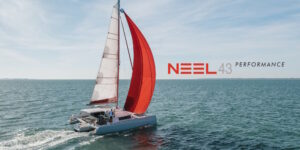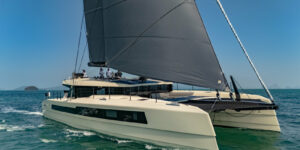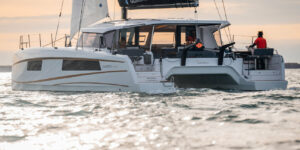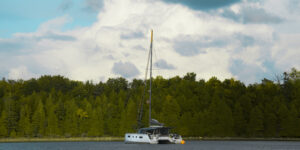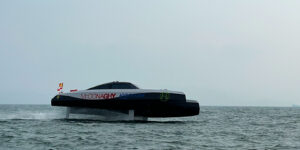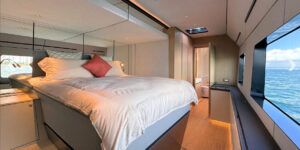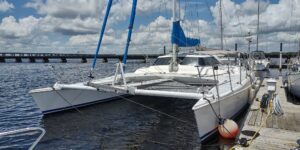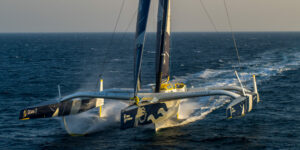Summary of Multihull Advantages
| Multihull Advantages | Multihull Drawbacks |
| Unsinkable – foam construction and more watertight bulkheads | Usually more expensive, length for length |
| Non-heeling environment | Will stay inverted when flipped |
| Higher average speeds | Bridgdecks can slam if not high enough |
| More interior space, 360 degree views, optimized layout | Not as easy to find dock space |
| Shallow draft – safer and more access to harbors, more anchorage possibilities | Usually performance decreases more rapidly than a monohull when overloaded |
| Twin engine and twin rudder redundancy | Windage can be high |
| Safer sail-handling and reefing procedure | Quicker motion, especially sailing upwind |
| Better interior steering station – often forward facing | Not fleet-friendly racers |
| Better protection in cockpit against sun and rain | More maintenance |
| Better autopilot function | |
| Ability to beach and access for repairs | |
| Better maneuverability in harbor | |
| More deck space and user friendly trampoline | |
| Better ventilation possibilities via emergency hatches, even in rain | |
| More confidence-inspiring for beginners / less seasickness | |
| Longer range and more efficient under power | |
| Galley-up location | |
| Separation and privacy of twin hulls | |
| Lower environmental impact – more efficient | |
| Dries out upright | |
| Easier access from water via transom steps | |
| Better dinghy storage on davits between hulls |







